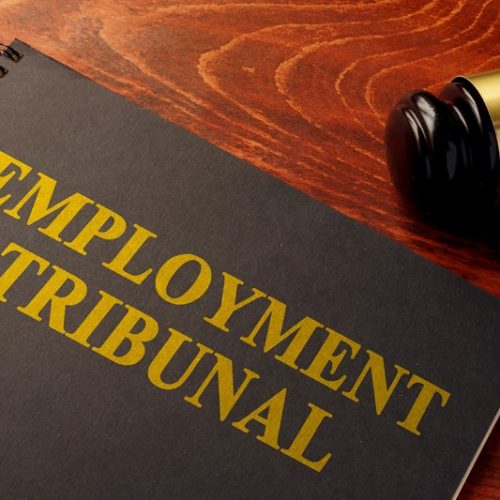

A Tribunal has provided a landmark ruling over employer-employee status in the context of direct payments made under the Care Act 2014, ruling that an LA was not in fact the direct employer of a carer. The appeal revolved around the question of whether the LA was the de facto employer of V, who had provided care and support to his adult brother, S, between 2013 and 2020. V was paid directly by the LA via the Care Act 2014 under a contract of employment.
V claimed race and disability discrimination, as well as payment arrears, asserting a formal employment relationship with the LA. The Appeal Tribunal rejected all of V's claims and found no error of law in the original Tribunal’s approach, as there was no basis for an implied contract with V. The Tribunal’s findings of fact, such as his brother S's control of the budget, payslips naming S, and their family arranging cover, clearly pointed to S as the employer. The test for implying such a contract is a "necessity" in explaining the parties' actions, which was not met here, given the express contract with S.
As such, direct payments are a valid method by which an LA may discharge its statutory duty under the Care Act 2014. As to the issue of S's capacity to enter into a contract of employment, the Judge agreed with the LA that capacity is a matter for medical evidence and not mere assertion. Even if S had lacked capacity, it would have made the contract voidable, not void, and would not have necessitated an implied contract with the LA. This decision strongly affirms that LAs can effectively discharge their statutory duties under the Care Act 2014 by making direct payments, without automatically becoming the employer of the carers. This case illustrates how courts will seek to determine the identity of the employer in such direct payment arrangements. Those employed via such direct payment schemes are unlikely to be able to claim employment status with the LA unless there is compelling evidence that the LA retained significant and direct control over their day-to-day work. This case has far-reaching implications for freelancers and so employers should always seek to clarify whether any direct payments constitute a formal employer-employee relationship to avoid legal pitfalls.

A recent tribunal clarified the procedural powers of the Certification Officer (CO), ruling that applications from trade union members cannot be refused simply because they are deemed "unarguable". After becoming Chair of a prestigious university, the appellant faced three internal complaints from other members/staff of the UCU involving bullying; a complaint regarding his decision not to permit a motion for an AGM at an EGM; and a data protection breach complaint from three managers after he included information about them.
All three complaints were investigated and upheld by an NEC panel of the UCU on 13 December 2021. The UCU rules, specifically 6.1 and 13.1, outline obligations for members to abide by the rules, refrain from detrimental conduct, and provide for disciplinary procedures, including censure, barring from office, suspension, or expulsion for breaches of rules or detriment to the UCU's interests.
On the 6th September 2022, the appellant submitted nine applications to the CO, alleging that the disciplinary procedure applied in his case had been unlawful, although the CO refused to accept these on the grounds that they were "not arguable" and a tribunal appeal followed. The tribunal ruled that the applications should be remitted to the CO due to the fact that the case did not meet the criteria for striking out under Section 256ZA, ruling that the CO erred in law. The CO's power to "refuse to accept" an application under Section 108B of the Trade Union and Labour Relations (Consolidation) Act (TULRCA) 1992 is narrowly confined to those instances where the CO is unsatisfied that the applicant has exhausted internal union complaints procedures. The phrase "unless he is satisfied" in Section 108B(1) means that if the CO is satisfied that internal procedures have been exhausted, he or she cannot refuse to accept the application on that ground. The primary mechanism for striking out applications on substantive grounds is Section 256ZA(1). Crucially, this section requires a "show cause" notice under Section 256ZA(4) – giving the applicant an opportunity to explain why their application should not be struck out.
This judgement reaffirms the procedural powers of the CO when handling applications against trade unions, strongly reinforcing the requirement for due process, specifically the "opportunity to be heard" before an application can be dismissed. This important case clarifies that, once internal union procedures are exhausted, the CO must accept any application and commence inquiries, even if those inquiries might later lead to a formal strike-out process with proper safeguards.

The Court of Appeal addressed the complexities of benefit scheme amendments and the lines of responsibility within corporate structures in a complex case surrounding post-employment entitlements. A Mr. Fasano had been an employee of RB Health Ltd., a member of the Reckitt Benckiser (RB) Group of companies, until the 13th of June 2019. The RB Group operates a long-term incentive plan, or LTIP, which makes provision of shares or share options for senior personnel employed by its various companies.
On the 18th of September 2019, RB Group amended the terms of the 2015 LTIP, requiring those participating in the 2015 LTIP to be employed as of 18 September 2019 to benefit from amended performance conditions in May 2020. Thus, Mr. Fasano was not eligible for an award under the amended LTIP rules. Mr. Fasano brought his case against RB Health and the RB Group to a tribunal, alleging that he had been subjected to indirect discrimination on the grounds of age, contrary to Sections 19 and 39 of the Equality Act 2010.
However, the tribunal held that RB Group was acting as the agent of RB Health when it amended the terms of the rules of the 2015 LTIP and that the provision, criterion or practice (PCP) thus pursued a legitimate aim. On appeal, it was found that the PCP applied by RB Group was incapable of achieving any legitimate aim of retaining staff and thus was not justified. However, the appeal was ultimately dismissed as the RB Group was not acting as the agent of RB Health, and neither RB Health nor RB Group was liable by reason of Sections 109 and 110 of the Act.
The Court of Appeal dismissed the appeal and agreed with the appeals tribunal that RB Group was not acting as an agent for RB Health when it amended the performance conditions of the LTIP. Therefore, RB Health is not, therefore, liable for any change made by RB Group to the LTIP pursuant to Section 109 of the Act. The Judge emphasised that, for agency to exist under common law and therefore within the scope of the Act, there needs to be clear authorisation from the principal (RB Health) for the agent (RB Group) to act on its behalf as regards a third party, such as Mr. Fasano. The fact that RB Health's employees benefited from the LTIP didn't automatically make RB Group its agent, although there might have been a different outcome if the rules had been applied by an employer to current employees.
This case demonstrates that, if a parent company, rather than the direct employer, makes a discriminatory decision regarding benefits, it might be harder to hold the direct employer liable under agency principles. Nonetheless, employers need to ensure that any performance-related policies are justifiable in their aim and implementation and non-discriminatory.

In a landmark ruling, the Supreme Court clarified the legal interpretation of the words ‘sex’, ‘woman’ and ‘man’ in Sections 11 and 212(1) of the Equality Act (EA) 2010 with respect to gender reassignment and sexual discrimination following a challenge by For Women Scotland (FWS), a leading feminist organisation. FWS had challenged the statutory guidance issued by the Scottish Ministers under the Gender Representation on Public Boards (Scotland) Act 2018 which stipulated that a trans woman with a full Gender Recognition Certificate (GRC) should be treated as a woman for the purposes of achieving the gender representation objective of 50% women on public boards. FWS argued that this interpretation was unlawful and outside the legislative competence of the Scottish Parliament. FWS contended that the definition of a ‘woman’ under the EA 2010 refers to biological sex, and a trans woman with a GRC is not a woman under this Act, while the Scottish Ministers argued that woman refers to ‘certificated sex’.
The Supreme Court unanimously allows the appeal and ruled that the terms “man”, “woman” and “sex” in the EA 2010 refer to biological sex citing the centrality of a woman’s capacity for pregnancy and giving birth, declaring that such provisions are “unworkable unless 'man' and 'woman' have a biological meaning”. Crucially, they further noted that the Sex Discrimination Act 1975 defines a ‘man’ and ‘woman’ in relation to biological sex and that “interpreting 'sex' as certificated sex would cut across the definitions of “man” and “woman” and thus the protected characteristic of sex in an incoherent way [thus] creating heterogeneous groupings.”
This decision has significant implications for the interpretation of anti-discrimination law, ensuring that the protections afforded by the EA 2010 are applied consistently and coherently. Although this case is not an employment case, prima facie, the ruling will impact separate-sex and single-sex services and will have important implications for gender pay gap reporting. However, this judgement should not be regarded as diminishing the protections afforded to trans employees in relation to discrimination, harassment, and victimisation on the grounds of gender reassignment. Employers must continue to create a workplace that is inclusive and respectful of trans employees. However, for the purposes of the Equality Act 2010, they will not be recognised on the basis of their certified sex.

An Employment Tribunal confirmed that using an employer's preferred method of communicating with employees to send offensive messages can serve as a ground for dismissal. A claimant was employed from September 2017 as a graduate trainee and then as a software developer until April 2021, at which juncture he was dismissed for gross misconduct. He subsequently brought three grievances during his employment, all of which were dismissed. The issue surrounded ‘Slack’ messages between the claimant and two colleagues sent during working hours using the respondent's systems. The claimant was suspended on 8 January 2021 while still on sick leave, pending a disciplinary investigation.
In a letter dated 15 January 2021, the claimant was invited to a disciplinary hearing. Attached to the letter was a five-page summary of comments alleging inappropriate and offensive language. Despite not attending the disciplinary hearing, the claimant shared his mitigating circumstances on 24 February 2021 and refused to disclose a copy of the Occupational Psychologist's report outlining his disabilities. The Tribunal concurred that Risby had been correctly applied and that the dismissal was a proportionate response to certain of the respondent's legitimate aims under Section 15(1)(b) of the Equality Act 2010, given the foul and abusive nature of the language directed towards colleagues. The claimant’s medical arguments had, however, not been originally submitted and could not then be produced on appeal to substantiate a direct link between the language itself and the disability.
This judgement is a clear warning that any abuse directed towards colleagues made during working hours using the employer’s preferred communication system can be considered misconduct and result in dismissal. All employees should be cautioned that any miscommunications on work messaging systems are thus potential grounds for dismissal and, while extreme disabilities or mental health conditions might serve as mitigating factors, any claimant will need robust medical evidence to support such a defence.

A school inspector dismissed for brushing water off a pupil’s head won his unfair dismissal claim against OFSTED. Mr. Hewston worked as a Social Care Regulatory Inspector and, on the 8th of October 2019, during a school inspection, he brushed water off the head and touched the shoulder of a young boy who had been caught in a rainstorm. The school reported the incident to OFSTED as a case of ‘inappropriate touching’ in an 11-page letter.
Disciplinary proceedings were instituted, and he was summarily dismissed for gross misconduct, despite his hitherto immaculate disciplinary record. Throughout the disciplinary process, Mr. Hewston maintained that his conduct was appropriate, even though he would not have done it again due to the trouble it had caused him. Mr. Hewston brought proceedings against OFSTED for both unfair and wrongful dismissal, both of which were dismissed. However, he successfully appealed at a tribunal, which found that the claimant had been unfairly dismissed, as OFSTED did not have a policy in place prohibiting physical contact with a child, nor any disciplinary rules defining touching as gross misconduct.
Section 94 of the Employment Rights Act (ERA) 1996 gives employees the right not to be unfairly dismissed, and the absence of published guidance or disciplinary rules on physical contact is dispositive. Indeed, the lack of any such guidance would result in the claimant not knowing that what he was doing was “so seriously wrong as to justify dismissal”.
The decision also makes it clear that a person cannot be dismissed because they did not show the ‘right’ reaction and insight during a disciplinary hearing. The fact that Mr. Hewston would never act the same way because of the trouble it caused him, rather than because he admits his action was ‘wrong’, is irrelevant; the salient point being that he would not do it again.
Employers must ensure that they have the right guidance and policies in place if a certain form of conduct is deemed inappropriate in their field; otherwise, any subsequent dismissal could be regarded as unfair. Your employees must be able to know what behaviours are reasonably expected from them.

Kau Media Group (KMG) Ltd. sought to enforce two post-termination employment restriction (PTRs) contained in a contract of employment to restrict Mr. Hart, a former employee, from working for his proposed new employer, MiSmile Media Ltd. (MML).
Mr. Hart had worked for KMG from November 2020 to late 2024 as an Account Director. From 2021, the defendant became Account Director for MML, a longstanding client of KMG. On the 19th of September 2024, Mr. Hart informed Mr. Khokhar of KMG that he had since taken a job at MML despite being offered more favourable terms, having been approached by the CEO of MML. Mr. Khokhar however made it clear that taking such a job was against the terms of Mr. Hart’s contract.
On the 25th of September 2024, Mr. Hart inaccurately told the claimant he had already signed a contract with MML, before proceedings were started on the 13th of December 2024. The High Court however concluded that KMG did not establish that the PTRs were enforceable with respect to confidentiality and refused the application for injunctive relief on the grounds of ‘restraint of trade’.
The onus was on KMG to demonstrate that the PTRs were reasonable, protected its legitimate business interests, and that any restrictions were commensurate with the benefits secured under the contract. Even though the services provided by MML and KMG were overtly identical, making them potential competitors, the work involved did not comprise a core part of KMG’s dental sector business and thus MML was not effectively in direct competition with KMG. Settled case law has established that legitimate interest does not cover “the skill, experience, know-how, and general knowledge" acquired by an employee, in order to rely on this interest, KMG should have demonstrated ‘objective’ knowledge.
Thus, before incorporating or seeking to enforce any PTRs, ensure that any PTR relied upon is reasonable between the parties, protects the company’s legitimate business interests, and does not venture beyond these demarcations, or else the PTR may be rendered void and unenforceable.

A complex celebrity case arose recently in which the First-tier Tax Tribunal (FTT) was asked to consider the application of the intermediaries’ legislation (IR35), otherwise known as off-payroll working, to payments made by Manchester United Football Club (MUFC) to Bryan Robson Ltd.
This appeal was in relation to determinations of income tax made under Reg. 80 of the PAYE Regulations and s31 of the Taxes Management Act (TMA) 1970 for personal appearances provided to MUFC by Bryan Robson Ltd. as a ‘global ambassador’ from 2015/16 to 2020/21. Those agreements included a licence for MUFC to exploit Mr. Robson’s “image rights” and required the former England star to make 35 personal appearances per year at MUFC’s request for a fixed sum. Although the image rights were not subject to the IR35 legislation and were left to be decided separately, and the additional tax due under the IR35 rules is to be determined.
This technical tax case highlights the intricate factors that determine employment status under IR35 and anyone providing such personal services, including freelancers, content creators, and contractors, has to demonstrate a high level of autonomy to be considered truly self-employed and present watertight contracts to the HMRC.

The Employment Appeal Tribunal slashed a £10,000 award for injury to feeling by 80% after an original tribunal ruling was deemed not to be Meek compliant as it failed to provide adequate reasons for the quantum awarded. A Miss Graham was employed by Eddie Stobart Ltd. for just over ten months as a planner when she became pregnant and immediately notified her line manager. Miss Graham asserted her right to be offered suitable alternative employment during her maternity leave under the MAPLE Regulations. She was interviewed for a new role but was unsuccessful and was terminated by reason of redundancy although her grievance Email to HR was blocked by the firewall.
Miss Graham complained that she had been "automatically" and unfairly dismissed as per Section 99 of the Employment Rights Act 1996 on the basis that the new role should have been given to her in priority to others who were not on maternity leave. The first Tribunal found that Miss Graham had not been unfairly dismissed but upheld her claim of detrimental treatment and pregnancy/maternity discrimination and awarded £10,000 for injury to her feelings. Eddie Stobart Ltd. appealed and the second tribunal found the award excessive given that she had soon found alternative employment and had not endured prolonged suffering.
This case underscores the importance of presenting evidence supporting any claim for injury to feelings in the form of a ‘checklist’, although HR departments should note that those who are forced to chase up their grievances during allocated maternity or paternity leave may have grounds for such claims, however excessive or seemingly irrational.

The Employment Appeal Tribunal (EAT) upheld claims of constructive dismissal and disability discrimination against Whyte & Mackay Limited (W&ML) in the case of Mr. Duployen , a former forklift truck and warehouse operator, following his termination.
W&ML had appealed the ET's decision on several grounds, seeking reinstatement or re-engagement, a higher award for injury to feelings, and any interest due on the awards. However, reinstatement proved impracticable due to the breakdown in relations and, while theoretically possible, it was not reasonable given the circumstances. Although the issue of re-engagement, while not addressed by the ET, is a required step per Sections 113 and 116 of the Employment Rights Act (ERA) 1996, tribunals are not compelled to order either a reinstatement or re-engagement, even though they have the discretion to do so.
The tribunals found that the appellant suffered embarrassment, humiliation and distress as a consequence of the discriminatory treatment by the respondent with a detrimental impact on his mental health.
This is a cautionary tale for employers and HR departments alike, and the letter of the law should be followed diligently in terms of the Employment Rights Act (ERA) 1996, the ECHR, and the Human Rights Act (HRA) 1998 to avoid claims of discrimination or constructive dismissal, especially given that not all handicaps or disabilities are self-evident.